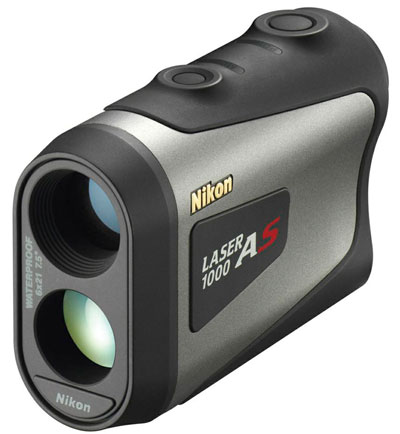Nikon 1000A S
Golf Monthly Senior Staff Writer Paul O'Hagan tests the Nikon 1000A S

'BEST FOR CLUB SELECTION' Unit price: £399 Download costs: None Key technology: A First Target Priority mode displays the distance to the nearest target when the unit finds more than one reading (such as trees), making it easier to locate the flag. The unit takes into account hilly terrain and adjusts the yardage reading accordingly. Designed to be easy to use for those who wear glasses. The slope function makes you far more aware of how hilly terrain can affect club selection. First Target Priority makes it easy to locate the flag. But... those who play in official competitions won’t be able to use the unit. Nikon’s Coolshot model feels more comfortable in the hand. GM verdict (Paul O'Hagan - 5 Handicap. Current DMD: Bushnell Tour V2): Laser devices with slope functionality are hard to rate because if you play in official competitions you won’t be allowed to use them. They can, however, help you understand more about your game in practice, and the Nikon 1000A S is superb at providing the correct yardage quickly. All of this is reflected in the premium price tag. The zoom is good, but the Coolshot and other new models are easier to use in dim light. Value: 9/15 Ease of use: 13/15 Information: 12/15 Accuracy: 13/15 Set-up: 10/10 Ergonomics: 8/10 Performance: 15/20 Total: 80/100
Why you can trust Golf Monthly
As a relative newcomer to golf, the distance measuring device (DMD) has developed at a rapid pace. The information has become more accurate, devices are easier to use and the good news is, they're also becoming more affordable. With this in mind, we tested 12 models that have been launched since our 2011 test. Not only have top-end models improved the quality of maps and the amount of information on offer, but there has also been an influx of stripped-back versions that are easy to use and provide basic information.
The major laser brands have also refined their products to make them easier to use. All this means there are more options out there than ever before, with products designed to meet the needs of different golfers. In this test, we aim to help refine your search and identify the best products on the market.
Venue:
The Golf Monthly staff conducted the test at the beautiful Liphook Golf Club in Hampshire, number 79 in the Golf Monthly Top 100 list. It was a course that the vast majority of testers had never played before and features a number of blind shots, as well as holes that require a club other than driver from the tee. The course offered the perfect opportunity to test each device to its fullest.
Test criteria:
To begin with, the test team went through the set-up process for every device to compare how easy it was to get the unit ready for play. Each member of the team then tried out two units on the course. The test team's handicaps varied from five to 24, and ranged from long-time DMD users to those who had never used one before. This helped us to test the suitability of a unit for different golfers. After the round, the team compared the features and benefits of each model and awarded points for the following:
Value: The initial price and download costs comparative to the quality of the unit.
Set-up: How easy the unit is to set up initially and download courses on to.
Ease of use: How easy it is to read yardages, as well as use any other additional features.
Information: The quality and quantity of information provided on the unit.
Ergonomics: How the unit feels in the hand, the button design and the bag clip.
Accuracy: How the yardage readings compare with other units, yardage markers and course guides.
Performance: An overall rating including how robust the unit is, the battery life, the clarity of the screen and how the unit attached to a golf bag.
Get the Golf Monthly Newsletter
Subscribe to the Golf Monthly newsletter to stay up to date with all the latest tour news, equipment news, reviews, head-to-heads and buyer’s guides from our team of experienced experts.
-
 Chevron Championship Tee Times: Rounds One And Two
Chevron Championship Tee Times: Rounds One And TwoA look at when the players are teeing it up in the opening two rounds of the Chevron Championship - the first women's Major of the year
By Mike Hall Published
-
 Charley Hull Social Media Video Reveals Brutal Weather Conditions Ahead Of Chevron Championship
Charley Hull Social Media Video Reveals Brutal Weather Conditions Ahead Of Chevron ChampionshipCharley Hull has added a video to her Instagram stories showing strong wind and heavy rain in Texas ahead of the first women's Major of the year
By Mike Hall Published
-
 How To Watch Chevron Championship 2025: Live Streams, TV Channels, Schedule
How To Watch Chevron Championship 2025: Live Streams, TV Channels, ScheduleAll the details on how to watch Chevron Championship online and on TV from anywhere, as the first women's Major of 2025 takes place at Carlton Woods this week.
By Roderick Easdale Published